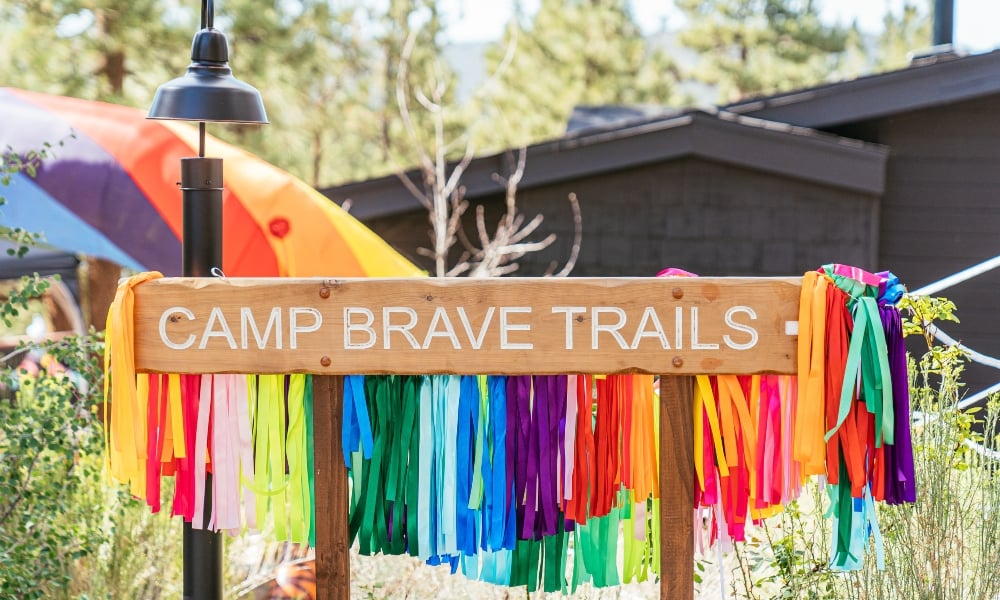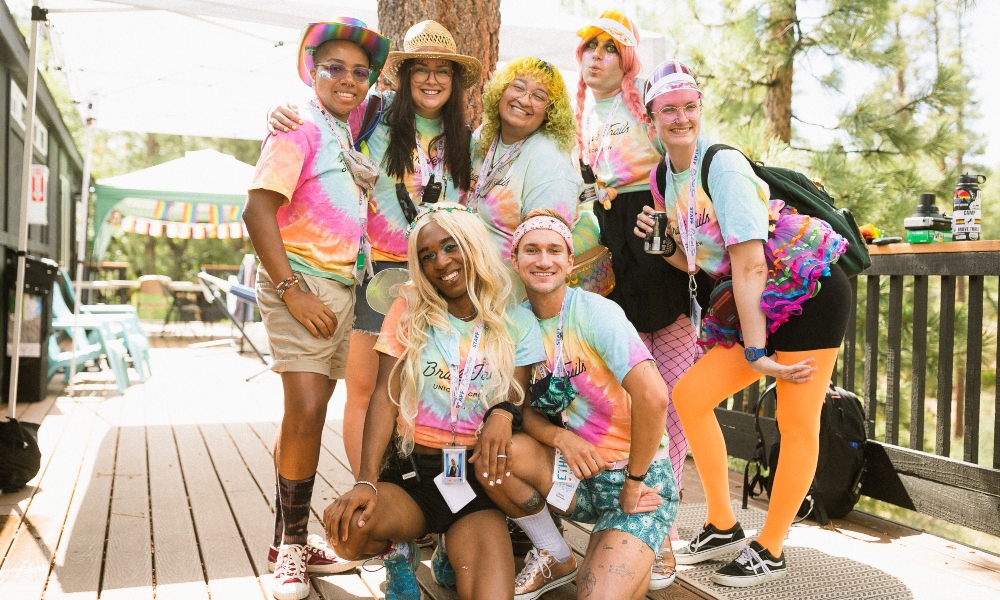In this article by Suunto athlete, ultra-runner and diversity champion Ryan Montgomery, he explains allyship and how we can all be good allies in the outdoors. Click here to read Ryan’s previous article on the importance of diversity in the outdoors scene.
By Ryan Montgomery
Not everyone feels welcome, nor safe, in the outdoors. Diverse communities—our queer, LGBT, people of color, and peers with disabilities—often experience limitations that prevent them from getting outdoors. Each of us plays a role in eliminating barriers to outdoor spaces for others; being an ally is what will make outdoor recreation safe and accessible for all people.

Photo by Brave Trails, taken at Camp Brave Trails.
What is allyship?
Allyship: We all have heard this word at work, on social media, and in conversation. Perhaps it seems daunting or even time-consuming. However, when I think of allyship, I think of it as a process over time—a process of learning, action, more learning, and more action.
Simply put, becoming an ally for others in the outdoors requires us take an action, using our own varying levels of privilege (which I define as money, knowledge, influence, tools, etc.) to amplify the work and voices of people who historically haven’t had a visible presence in outdoor spaces.
When you can start to think of all the tools you have that can be leveraged for allyship, you will begin to realize you have many ways to make an impact right now.

Photo by Latinos Outdoors.
What is allyship important?
We want everyone to enjoy the experience of the outdoors. With this goal in mind, it’s important to remember that we all experience the outdoors differently. Think about when you pass others on a trail . . . do they smile, make eye contact, or say “hello!” back? Don’t assume these are universal experiences among everyone—they are not. While a lot of us enjoy spending time in nature, it often comes at a price, such as stares and unwanted comments about body weight, skin color, queerness and gender expression, or perceived ability. In more serious situations, the cost of being in outdoor places comes in the form of hostile encounters, racial slurs, or other forms of bullying and acts of discrimination.
Allyship is important because it helps stop these negative outdoor experiences becoming a reality among marginalized communities.

Photo by Brave Trails, taken at Camp Brave Trails.
How can I be an ally to others?
Allyship is action. Yes, there are a lot of different actions you can take to start or develop your allyship. When people ask me how they can start or be a better ally, I suggest these 4 specific ally-building actions:
1 - Speak Up
See something, say something. Don’t be afraid to share and talk about allyship. Have the courage to provide others with learning opportunities about diversity in the outdoors and how to be an ally. Speak about the problem at hand and share what you’re learning. This is a low-hanging action that’s simple, yet highly impactful.
2 – Pass the Microphone
Highlight or elevate the voices of people who don’t act or look like you, including diverse athletes and outdoor leaders and organizations.
Part of allyship is creating more access for marginalized people. If you don’t have a “microphone” to hand over, bring an extra chair, expand the table, or physically give your seat to a marginalized person.
3 – Learn, Don’t Assume You Know Everything:
Probably the most important, is to focus on learning. Ask questions. Lead with curiosity. Listen to others’ stories. Learning about others is the foundational block to allyship. There are plenty of learning opportunities online. The Safe Zone Project provided self-guided LGBT ally training as a resource. In addition to The Safe Zone Project, I have enjoyed learning from the following guides, books, and creators:
- Black Faces, White Spaces by Carolyn Finney (Book)
- Whiteness in the Outdoors Guide (Guide)
- Being an LGBT+ Ally Guide by the Human Rights Campaign (Guide)
- Braiding Sweetgrass by Robin Kimmerer (Book)
- Alison Desir, black runner and equity advocate (Creator to follow)
4 - Donate to Support Community Groups
If you are privileged financially, consider supporting outdoor affinity or community groups. These groups span across a broad spectrum of non-profits that get communities outside, perform learning and development, or provide education in the outdoor industry and more. Some of my favorite affinity groups and programs that you can support are Brave Trails, Outdoor Afro, and Latino Outdoors.

Photo by Brave Trails, taken at Camp Brave Trails.
Together, we can make the outdoors thrive
Remember that the outdoors teaches us that diversity is necessary for survival—to thrive. If we each do our part, leveraging our own unique privileges to make the outdoors more inclusive for our marginalized communities, then our human ecosystem can truly thrive.
Inspiring organizations and affinity groups to follow and to donate to:
- Brave Trails
- Latinos Outdoors
- Outdoor Afro
- Melanin Base Camp
- Brown Girls Climb
- Natives Outdoors
- Indigenous Geotags
- Brown People Camping
- Unlikely Hikers
- Fatgirls Hiking
- Indigenous Women Hike
- Boccrew
- Outthereadventures
Lead images by: Latinos Outdoors